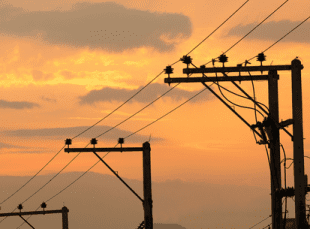 As the New York Public Service Commission debates a proposal to reform the state’s distribution utilities, Central Hudson Gas & Electric is getting out in front of the coming changes.
As the New York Public Service Commission debates a proposal to reform the state’s distribution utilities, Central Hudson Gas & Electric is getting out in front of the coming changes.
The utility filed a $46 million rate case with the PSC last week, packaged under the title “Value for our Valley,” which includes new distribution automation systems, community solar, expanded demand response, and a microgrid-as-a-service program.
The five-year rate plan is a direct response to the PSC’s REV proposal that was issued in April. The REV proceeding calls for New York’s distribution utilities to become distributed system platform providers (DSPPs) that enable systemwide efficiency and resiliency.
The DSPPs will upgrade the distribution network and then “create markets, tariffs and operational systems to enable behind-the-meter resource providers to monetize products and services,” according to the PSC. They will essentially become the purchaser and aggregator for distributed resources.
It will take years to transform utilities into DSPPs. There are various working groups designed to grapple with the difficult issues of building out the platforms themselves and integrating new energy systems at the grid edge to be leveraged in real time.
But the utilities are not sitting idle as these details get figured out. Consolidated Edison, for example, is looking at microgrids, energy efficiency and batteries to delay the construction of a new substation. It has also revamped its demand response program, offering far more money in congested areas where it needs the capacity most.
The plan from Central Hudson also calls for demand response in areas with capacity constraints, as well as a new distribution management system to enable applications such as conservation voltage reduction and fault location isolation and service restoration, or FLISR. The utility, which serves about 300,000 electric customers in the central Hudson Valley a few hours north of New York City, will install a mesh network for its distribution automation applications.
“Some of these proposed programs and investments in infrastructure are largely in response to the Public Service Commission’s REV,” Steven Lant, CEO of Central Hudson, said in a statement.
One of the more forward-looking proposals by Central Hudson is the request to build microgrids for resiliency, both in areas with critical facilities and in remote regions of its territory. The microgrids would be built and operated by the utility, and customers that are serviced by the microgrids would pay a fee on the utility bill.
In PSC testimony on the rate case proposal, Paul Haering, VP of engineering and system operations at Central Hudson, also said that the utility would like to build microgrids in more isolated areas. It already has a generator and islandable microgrid in Frost Valley, a remote region in the utility’s territory. Haering said the microgrid has provided reliable power through more than a dozen storms since 2010.
Central Hudson could be one of the first utilities to grapple with just how much a microgrid is worth, and what, if any, portion of a microgrid that serves community offsets should be rate-based. In Maryland, for example, the state’s PSC found that some portion of public-service microgrids that were owned and operated by utilities could be rate-based. Central Hudson also noted that the technological complexity and fuel source for the microgrids is an open question.
Aside from microgrids, Central Hudson also proposed community solar farms in sizes from 1 megawatt to 3 megawatts. “Under the proposal, customers may elect to purchase energy at a fixed electric supply rate over the period of their purchase agreement,” the utility said. “On a price-per-power-output basis, large-scale solar is less than half the cost of installing rooftop systems, and the locations of these facilities can be selected by Central Hudson to provide optimal support of the local electric grid.”
The $46 million rate plan also calls for upgrades to aging infrastructure and storm-hardening measures. The proposal, which comes after a two-year rate freeze, will raise residential rates by an average of about $4.78 per month. If the plan is approved by the PSC, it will go into effect on July 1, 2015.
Source: Greentech Media. Reproduced with permission.










